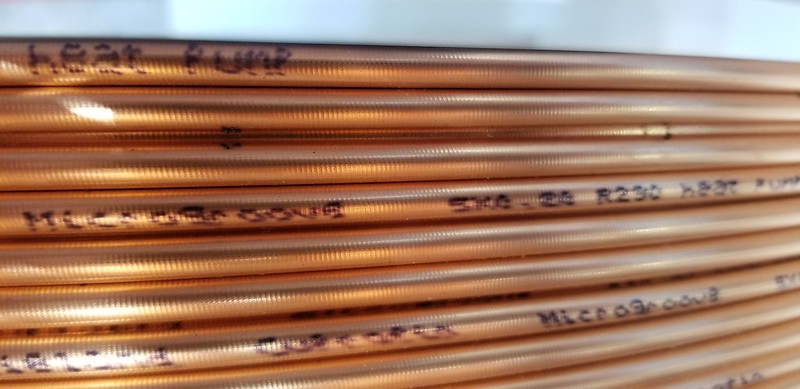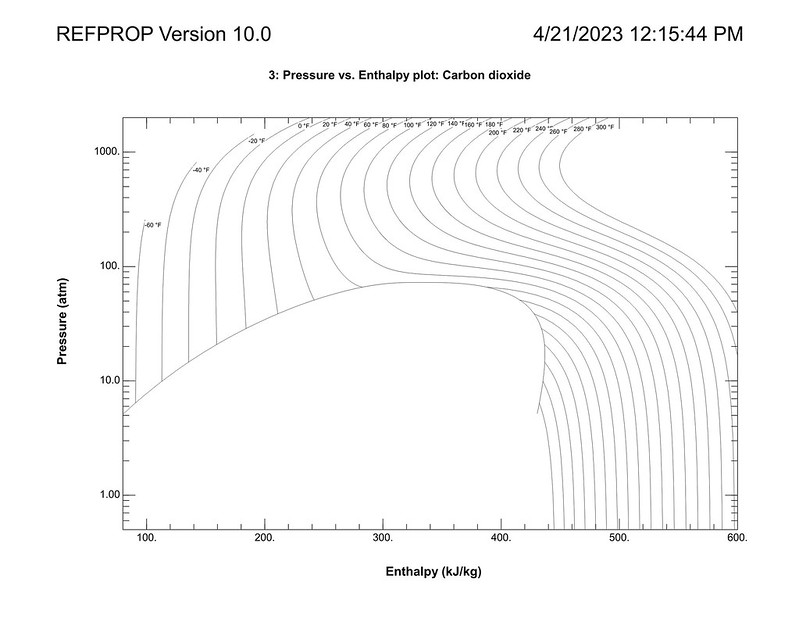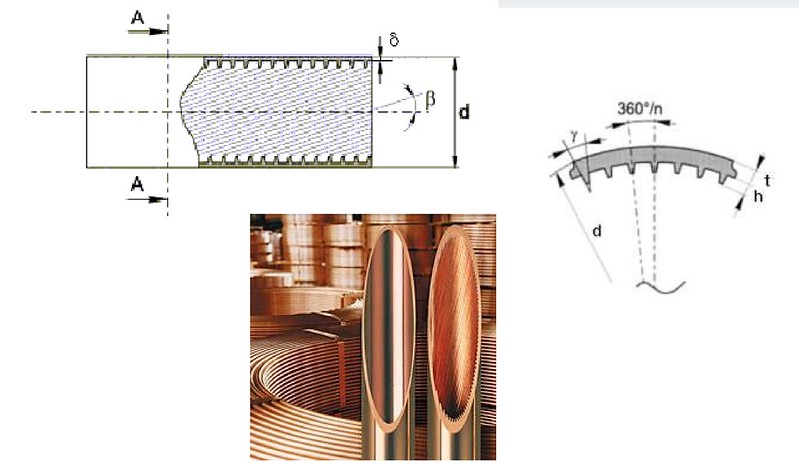
The copper tubes for HVACR applications have excellent formability and are not subject to stress corrosion cracking or hydrogen embrittlement. These are just a few of the reasons why copper is a superior metal for heat exchanger and HVACR applications.
For example, copper tubes typically are made from phosphorus-deoxidized copper. The metal is nearly pure copper (99.90 percent by weight) with limited but relatively high residual phosphorus. The official European Normal (EN) designation is Cu-DHP, where DHP refers to “deoxidized high phosphorus.” The UNS designation is C12200. According to the specifications, the percentage of phosphorus by weight ranges between 0.015 and 0.040 percent.
The thermal conductivity of C12200 is 330 W/m K (compared to 401 W/m K for pure copper). Mechanical properties such as tensile strength and yield strength vary significantly depending on the temper, being lowest for annealed copper. The value for annealed copper is often quoted because annealing occurs when the metal is brazed.
Tube Wall Thickness

Tube-wall thickness is critical for an HVACR application, whether for a distribution line or a heat exchanger. The material savings derived from reduced wall thickness is one reason smaller diameter tubes are desirable for heat exchangers.
Copper tubes are typically available with outer diameters of 5 mm, 6.35 mm (1/4 in.), 7 mm, 8 mm, 9.52 (3/8 in.), 12.7 mm (1/2 in.) and 15.9 mm (5/8 in.). These tubes are widely available with unprecedented precision. Smooth smaller diameter copper tubes are specified with smaller tube wall thickness and tighter tolerances. A smooth copper tube with 5 mm diameter may have a wall thickness of 0.20 mm to 0.23 mm. That wall thickness could be specified as 0.215 mm +/- 0.015 mm (0.0085 inches +/- 0.0006 inches).
High-Strength Alloy for R744
In recent years, carbon dioxide (R744) has been developed as a low-GWP natural refrigerant for refrigeration applications. R744 has an ultralow global warming potential (GPW =1). However, as seen in the R744 pressure-enthalpy diagram, pressures greater than 100 atmospheres may be required to operate in the (preferred) transcritical range of the vapor compression cycle.

Fortunately, a high strength copper alloy is available for R744 applications.
The alloy has a nominal weight percentage of 2.4 percent iron and in some instances is referred to as CuFe2P. It has been available since the 1960s for numerous applications and has now been repurposed for R744 applications, including gas coolers, evaporators, and distribution lines. The ASTM UNS number for this high strength copper-iron alloy is C19400.
Its thermal conductivity (270 W/m K) is less than that of pure copper but its yield strength of 275-435 MPa (40 to 63 ksi) is much higher than the yield strength of annealed C12220 which is nominally > 120 MPa (16 ksi).
Specifying Inner Grooves

Tube fabricators typically introduce proprietary enhancements on the inside surfaces of tubes. For example, the “herringbone” enhancement is produced by modifying the surface of a copper strip that is then butt welded to form a round tube. More often the patterns are produced by drawing the tubes through an inner grooved tube (IGT) forming machine.
These inner grooves can be specified with several geometrical parameters, for example, inside diameter, outside diameter, height of the microfins, the spacing between the microfins and helical angle. (See Figure 1.) Care must be taken not to damage these microfins when mechanically expanding the tubes to make contact with the fins in a heat exchanger, especially for smaller diameter tubes. Inner grooves can significantly increase the heat transfer coefficient between the refrigerant and the tube, which ultimately affects the system efficiency.
An inner-grooved tube has a groove depth (h) added to the bottom wall thickness (tb). For a 5 mm diameter inner-grooved tube, a typical groove depth is 0.12 mm to 0.15 mm. Other physical geometry parameters are the top apex angle (gamma), the lead helix angle (phi), and the number of grooves (n) as illustrated in Figure 1.

See tube manufacturers catalogs for exact tolerances.
Packaging, Cleanliness and Precision
The copper tubes can be shipped as straight lengths, coils or custom configurations. Quality and packaging can be specified according to various parameters, including but not limited to the following: chemical, alloy, size, mechanical, tolerances, cleanness, and eddy current testing requirements. There are standards in place to ensure cleaning, purging and pressurizing processes, which assure the tube cleanliness. Furthermore, copper tube can be third party verified in select sizes through Underwriters Laboratories (UL) for operating pressure and temperatures.
